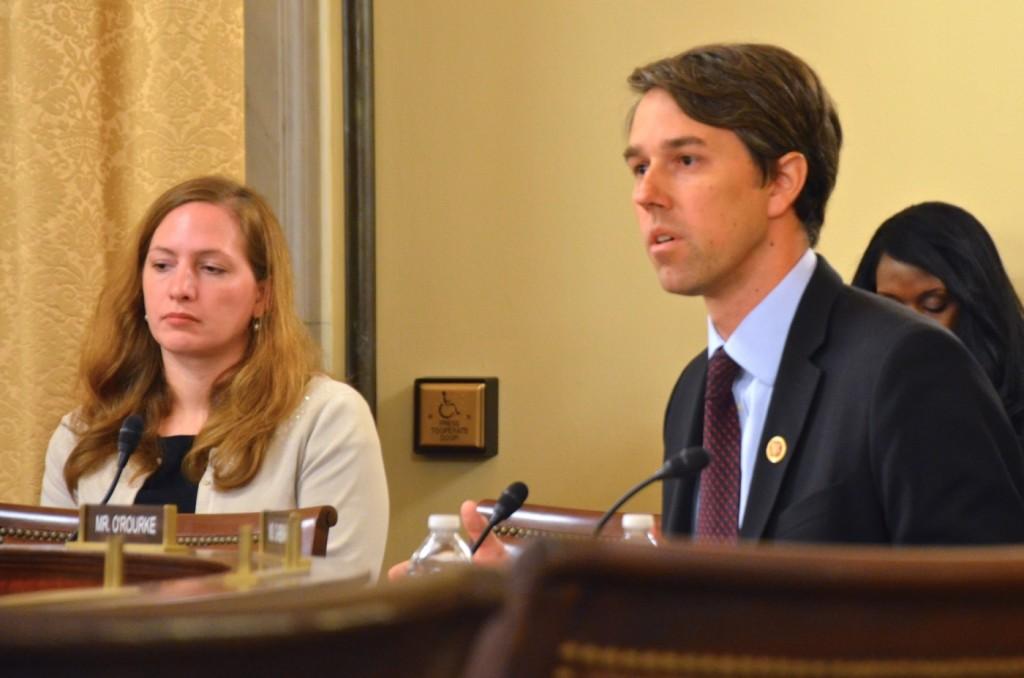WASHINGTON – The number of foreign nationals who have overstayed their visas in the U.S. remains unknown, and Congress is pressuring the Department of Homeland Security for a solution.
Under the Intelligence Reform and Terrorism Prevention Act of 2004, DHS was required to create a biometric entry and exit data system to match a physical component – fingerprints, facial image or iris scan – for foreigners who enter the U.S.
That would allow the country to track which visitors leave and which ones overstay their visas.
Congress first mandated an entry and exit system for visitors in the country in 1996. The system, which was to use biometric data by 2001, is 12 years overdue, Rep. Bennie G. Thompson, D-Miss., said in a press release. He cosponsored H.R. 3141, a measure that requires DHS to deploy a biometric exit system. Rep. Candice Miller, R-Mich., introduced the measure on Sept. 20.
DHS officials said at a hearing Thursday that concrete plans for a biometric exit system at U.S. ports will be available to Congress by 2015.
DHS is set to release so-called overstay rate statistics by the end of the year.
Rep. Beto O’Rourke, D-Texas, questioned the cost benefit of the biometric exit system. He said the system might create long waits for travelers and that other efforts to secure the borders have failed.
“I think that cost can be measured in a number of ways, certainly what it costs to purchase that and operate it and maintain it, but also what costs communities like ours in El Paso, states like Texas, where Mexico is our largest trade partner, or our country which has 6 million jobs tied just to U.S.-Mexico trade, will endure if we increase wait times, if we waste an opportunity and capitalize on trade that’s already there,” O’Rourke said.
Since the law went into effect, DHS has conducted pilot programs at 15 ports of entry and has an operational biometric entry system at all air, sea and land ports. But efforts to operate an exit biometric system have been a challenge, DHS officials said at the hearing before the House Committee on Homeland Security’s subcommittee on Border and Maritime Security.
John Wagner, acting deputy assistant commissioner of Customs and Border Protection, said that upward of $3 billion is needed to operate a biometric exit system at airports alone. Infrastructure and technological limitations presented a problem during the pilot, he said, adding that land ports, including pedestrian crossings and railroads, were not built with exit processing in mind.
“First, the traveler volume is significantly higher, there are various forms of transportations and there are also major infrastructure obstacles to the collection of an individual’s data upon departure,” Wagner said.
The U.S. and Canada have exchanged entry records under the 2012 Beyond the Border Action Plan. Mexico lacks a similar system of recording entries to the country and therefore no such agreement has been made, DHS officials said.
Rebecca Gambler, director of Homeland Security and Justice at DHS, said there are records of at least a million foreign nationals who entered the country legally for whom DHS has no record of departures or that they obtained permission stay.
Wagner said CBP is working with the science and technology branch of DHS, which will open a facility in early 2014 to test biometric technology. By mid-2015 the agency plans to test a pilot biometric exit system at a mid-size airport yet to be named. Later in the year, the agency said it will have an operational plan with set costs to present to the subcommittee.
“As a law enforcement operation, we want these biometrics. We want as many sources of data as we can run people through to support our law enforcement and national security mission,” Wagner said. “We want to be very deliberate about how we do this and do in a structured approach, but yes absolutely there is a sense of urgency.”
Andrés Rodríguez is a UTEP senior double major in Spanish and English and American literature. He is currently participating in the Scripps Howard Foundation Semester in Washington program. He may be reached at [email protected].









